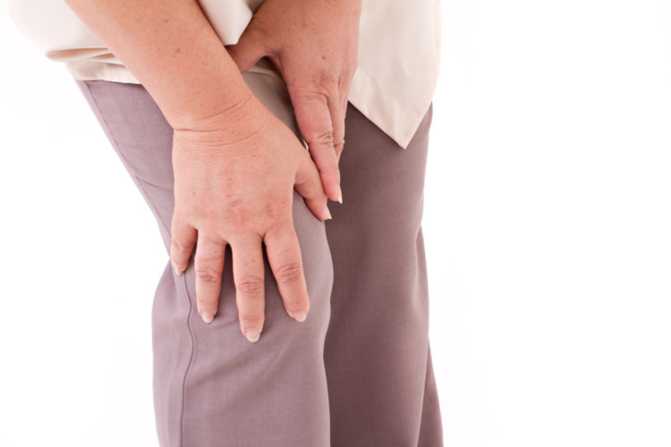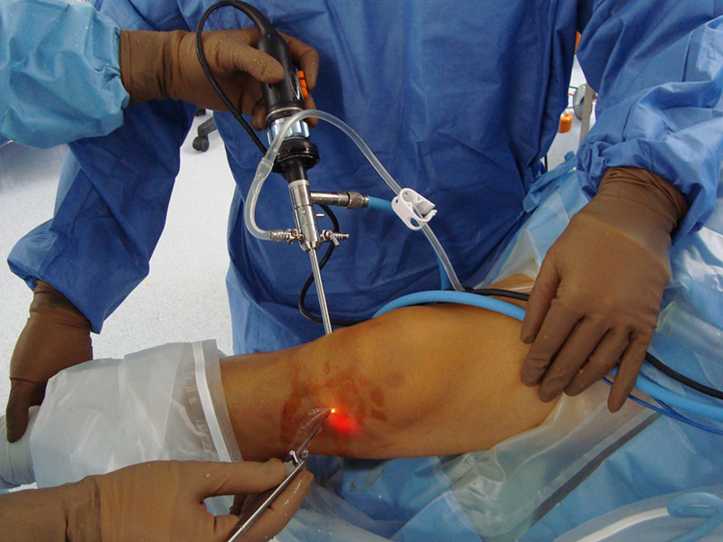Do you require any assistance? Simply reserve your appointment online below
Knee Arthroscopy
Getting you back to your active lifestyle
Knee arthroscopy is a surgical procedure that allows doctors to view the knee joint without making a large incision through the skin and other soft tissues. Arthroscopy is used to diagnose and treat a wide range of knee problems.
During knee arthroscopy, your surgeon inserts a small camera, called an arthroscope, into your knee joint. The camera displays pictures on a video monitor, and your surgeon uses these images to guide miniature surgical instruments.
Because the arthroscope and surgical instruments are thin, your surgeon can use very small incisions, rather than the larger incision. This results in less pain for patients, less joint stiffness, and often shortens the time it takes to recover and return to favorite activities.

Common Arthroscopic procedures of the Knee

They include:
- Removal or repair of a torn meniscus
- Reconstruction of a torn anterior cruciate ligament
- Removal of inflamed synovial tissue
- Trimming of damaged articular cartilage
- Treatment of patella (kneecap) problems
- Treatment of knee sepsis (infection)
When is knee arthroscopy recommended
Your doctor may recommend knee arthroscopy if you have a painful condition that does not respond to nonsurgical treatment.
Nonsurgical treatment includes rest, physical therapy, and medications or injections that can reduce inflammation.
Knee arthroscopy may relieve painful symptoms of many problems that damage the cartilage surfaces and other soft tissues surrounding the joint.
Complication and risks associated with knee arthroscopy
Like any surgery, knee arthroscopy poses some risks, though serious complications are uncommon.A person has an increased risk of infection and excessive bleeding during and after the surgery. The complication rate after arthroscopic surgery is very low.
If complications occur, they are usually minor and are treated easily. The use of anesthesia also comes with risks. In some people, it may cause allergic reactions or breathing difficulties.
Some risks are specific to knee arthroscopy. They include:
- chronic stiffness in the knee
- accidental damage to tissues and nerves
- infection inside the knee
- bleeding in the joints
- blood clots

You are in Great Hands
Knee Arthroscopy Procedure

Your doctor will give you an anesthetic before your knee arthroscopy. This may be:
- local (numbs your knee only)
- regional (numbs you from the waist down)
- general (puts you completely to sleep)
If you’re awake, you may be able to watch the procedure on a monitor.The surgeon will begin by making a few small incisions, or cuts, in your knee. Sterile salt water, or saline, will then pump in to expand your knee. This makes it easier for the surgeon to see inside the joint.
The arthroscope enters one of the cuts and the surgeon will look around in your joint using the attached camera. The surgeon can see the images produced by the camera on the monitor in the operating room.
When the surgeon locates the problem in your knee, they may then insert small tools into the incisions to correct the issue. After the surgery, the surgeon drains the saline from your joint and closes your cuts with stitches.

Recovery after knee Arthroscopy

This surgery isn’t very invasive and takes a shorter time. Most patients are likely go home on the same day for recovery. You should use an ice pack on your knee and a dressing. The ice will help reduce swelling and minimize your pain
- keeping the leg elevated for several days after surgery to reduce pain and swelling
- resting well and often
- changing the dressing regularly
- using crutches and following the doctor’s recommendations about applying weight to the knee
- See your surgeon for a follow-up appointment a few days after the procedure.
